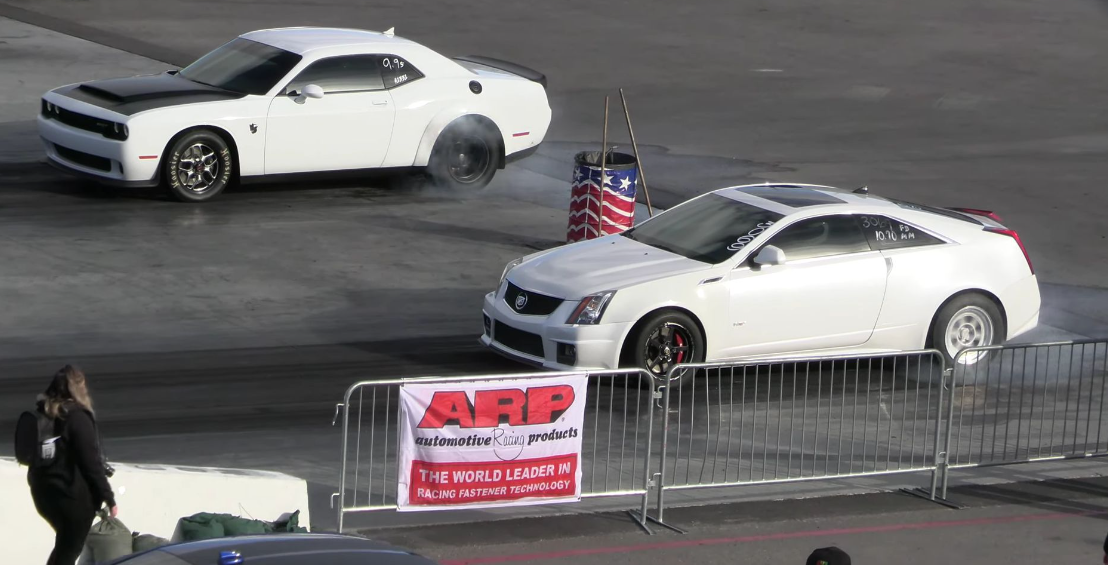The Cadillac V series of high-performance vehicles rolled out in 2003 with the 2004 model year CTS-V. The second-generation Cadillac CTS-V was offered in five-, four-, and two-door forms, with all three of them relying on a supercharged V8 mill.
As opposed to the LS6 and LS2 of the first generation, the second coming of the CTS-V is powered by the LSA. Closely related to the LS3-based LS9, the 6.2-liter LSA produces 556 horsepower and 551 pound-feet (747 Nm) in this application. The Cadillac CTS-V Coupe in the featured video obviously packs the aforementioned engine, but alas, the video’s uploader did not mention anything in regard to engine mods.

Be that as it may, we do notice racing wheels and sticky drag radials out back, which likely means a few upgrades under the hood as well. The Caddy’s driver posted a hugely impressive 10.59 seconds at 128.52 miles per hour (207 kilometers per hour) at the strip, which is way better than the mid-12-second passes of a stock Cadillac CTS-V Coupe.
Unfortunately, that’s not good enough to keep the Demon 170 at bay. The most powerful internal-combustion muscle car of all time packs 1,025 horsepower and 945 pound-feet (1,281 Nm) of tire-annihilating torque on E85, whereas E10 gives you a respectable 900 hp and 810 lb-ft (1,098 Nm).
Dodge’s most extreme internal-combustion muscle car also happens to rock drag radials out back, complemented by skinnies for the front axle. Demon 170 further sweetens the deal with a quicker-shifting transmission, a transbrake system, and – of course – drag mode for the uniquely tuned adaptive dampers. Given these details, the Demon 170 didn’t break a sweat on its way to a 9.98-second quarter mile at the Las Vegas Motor Speedway.
The Caddy then challenges a different Challenger (pun obviously intended). Rather than a no-nonsense Demon 170, we’re dealing with an R/T Scat Pack 1320. Named after the 1,320 feet in a quarter mile, this variant of the Challenger uses the 6.4-liter HEMI with 485 horsepower and 475 pound-feet (644 Nm) to its name. This particular example of the breed is running street rubber fore and aft. Unsurprisingly, it clocks 13.51 seconds compared to 11.44 seconds for the CTS-V Coupe.
As for the last race in the video, the Demon 170 from the first race takes on another Demon 170. The purple car dons race wheels at both ends, whereas the white car is equipped with stock rear wheels and front race wheels mounted with Hoosier skinnies. In other words, there is not much in the way of differences between these Challenger SRT Demon 170s.
Still, how do you explain the purple car going 9.28 seconds compared to 9.79 for the white one? Whatever may have happened there, remember that Dodge advertised the Challenger SRT Demon 170 with an NHRA-certified ET of 8.91 seconds at 151.17 miles per hour (243.28 kilometers per hour)
